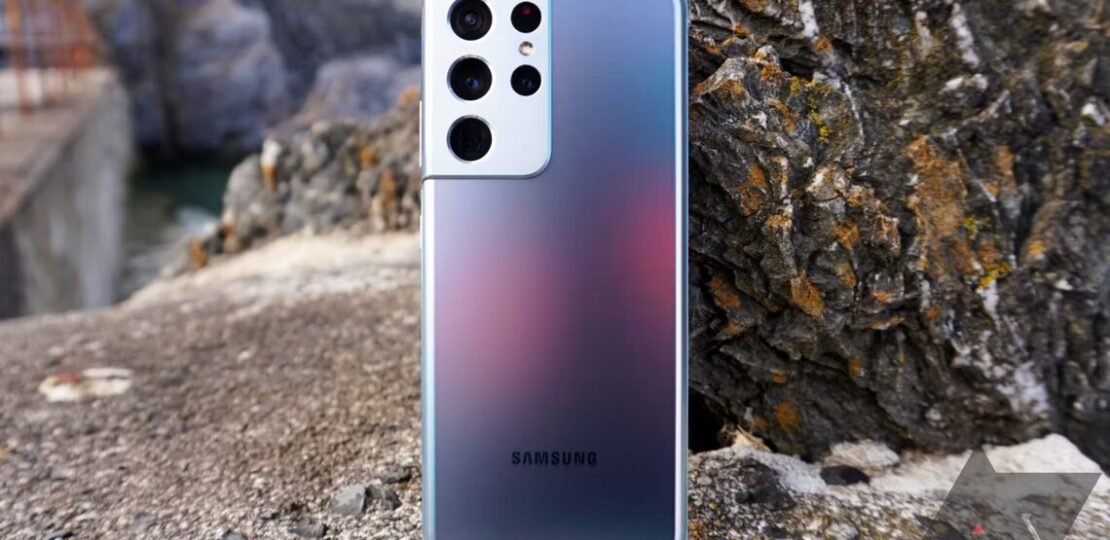
To make the future exciting, Samsung should look backward
Samsung has produced fifteen generations of the Galaxy S smartphone at this point. The series has changed a lot since its debut in 2010, especially with the introduction of the Ultra model in 2020. While technology and the Galaxy lineup have mostly improved, some hardware and software features have been dropped along the way. The Galaxy S24 series might offer an excellent set of phones, but it hasn’t escaped the criticism that it feels boring due to the lack of change. As we look ahead to the Galaxy S25 and what we hope will be a brand overhaul, I think Samsung should look to its heritage for inspiration.
Vairable camera aperture
Galaxy S9 to Galaxy S10
The Galaxy S9 and S10 are viewed as two of Samsung’s best smartphones, and it’s easy to see why. The Galaxy S9 took the much-loved Galaxy S8’s design and fixed the fingerprint scanner placement. At the same time, the S10 implemented the hole-punch camera, introduced the fantastic ultrasonic fingerprint reader, and was generally just a tremendous device.
Both phones featured a variable aperture on the primary camera, switching between f/1.5 in low light and f/2.4 in sunlight. This enabled better performance when the sun went down while also optimizing for perfect lighting conditions to allow greater detail. However, the feature only lasted for two years, dying off after the Galaxy Note 10+.
With Samsung’s move to high-resolution cameras, starting with the 108MP S20 Ultra and then 200MP with the S23 and S24 Ultra, I’d like to see this feature return. The S9 and S10 could only snap between f/1.5 and f/2.4 and couldn’t achieve numbers between them. But imagine if Samsung could expand that range.
The S24 Ultra’s 200MP sensor is f/1.7, striking a middle ground between detail and light capture. If Samsung resurrected this technology with more stops, it could be the camera improvement we’ve been waiting for. It’s unclear if the shutter lag issue that’s plagued Samsung’s Ultra phones is down to hardware or software, but surely having an even wider aperture that allows for a faster shutter speed would help. Imagine if the S25 Ultra could adjust its camera between three apertures, say f/1.4, f/1.7, and f/2.4. Samsung has also pushed manual controls with Expert RAW over the last few years. Imagine how creative we could be with the depth of field if we had manual access to the aperture in that app.
The SD card slot
Galaxy S to S5, S7 to S20
The SD card slot has been dying out for a long time, and you’ll struggle to find it outside budget phones or the camera-focused Sony Xperia. It suffered two deaths in Samsung’s flagship lineup, with the company removing it from the Galaxy S6 before adding it to the S7 due to backlash. On the one hand, it’s easy to see why. Now more than ever, most of us have a reliable internet connection with a large data allowance to stream music and videos. Internal storage has also grown. The original Galaxy S came with either 4GB or 8GB of storage, while the S24 starts at 128GB, with the S24+ and Ultra having a minimum of 256GB. That’s only base storage, with the Ultra offering up to 1TB.
Internal storage doesn’t solve everything, though. Phones aren’t upgradeable in this regard, so while 256GB might be enough for you now, that may change. If you decide to go traveling and won’t have a consistent connection, you’ll want plenty of storage space for your photos, music, and movies to get you through a flight. An SD card slot affords that flexibility.
It would also be a great help toward backing up and restoring phones. Samsung added an external storage backup option to its phones last year. It fully backs up your entire phone and writes it to an SD card or USB drive to be restored through Smart Switch. You read that right; it works with SD cards. That’s great for the budget phones Samsung still makes with SD slots, but it leaves those of us with more expensive phones in the cold.
The Bixby button
Galaxy S8 to S10
I know, I know, please put the pitchforks down. The Bixby button wasn’t very well received because it couldn’t do anything other than summon Bixby, a much-reviled voice assistant. However, that changed toward the end of its life in the Galaxy S10; Samsung had two mappable options for the button: a single press and a double press. Bixby had to be assigned to one, but the other could be assigned to anything you liked. Later on, third-party apps landed that let you totally remap both inputs.
Fast-forward to 2024, and things are different. For starters, Bixby is pretty good these days, to the point that I’ve stopped using Google Assistant. It completely outdoes Assistant when it comes to offline on-device controls, and it’s also caught up elsewhere. Aside from that, Samsung lets you remap the current Bixby shortcut on the power button to Google Assistant or any other function or app, so long as you use Good Lock. Having an additional button on the other side of the device would be great. I’d love it if a short press took a photo while a long press focused it, for example. With Apple’s action button added to the iPhone 15 Pro last year, it wouldn’t surprise me if this one did make a comeback.
Smart rotation
Galaxy S2 to unknown
The history of this feature is a little unclear. Thanks to a software update, it launched with the Galaxy S3 or S4 but was made available as far back as the Galaxy S2. I’m not sure which Galaxy S device was the last to feature it. I switched to Google phones after the S4, and the feature had been removed by the time I got my Galaxy S10+. It didn’t get much attention back then, so records of when it disappeared are spotty at best.
Smart rotation was great. If you had auto rotate switched on, then each time the phone was moved into landscape, it would quickly activate the camera and check the orientation of your eyes. It would rotate the screen if it could see that your eyes were now sideways relative to the phone. If, however, it saw your eyes were still the right way up, it assumed you were lying down with the device and kept things in portrait.
It was so simple, but it worked well. Android 9.0 (Pie) added a rotation feature where the phone would display a manual rotation button if you turned the phone with auto rotation switched off, but it wasn’t the same. I’ve used Pixels, Samsungs, Motorolas, and more, and sometimes that button won’t appear until I rotate the phone again. It’s also a small tap target, so it’s easy to miss if you’re in a hurry. Smart rotation wasn’t perfect, especially as it struggled in low light. However, returning another forgotten Samsung feature could fix that.
Iris scanner
Note 7 Galaxy S8 to S9
The Galaxy S8 and S9 backed up their fingerprint readers with an iris scanner. When you try to unlock the phone, it uses a selfie camera that must line up with your eyes to open the device. It wasn’t the most elegant way to unlock a device, but once it was used for a while, most could line their eyes up based on muscle memory and get right into their phones.
The iris scanner also had lighting issues. Our pupils dilate as it gets dark, which could throw the scanner off, especially in total darkness. Technology has come a long way since the S8 and S9 were around, and infrared iris scanners can operate in total darkness these days. While I prefer fingerprint scanners to facial recognition, others feel differently and would welcome the return of an iris scanner. It would also enable the aforementioned smart rotation to work in the dark.
If I had to guess, I’d say two things prevent Samsung from bringing this back. Cost, and the reason it went away in the first place — space. The Galaxy S10 deleted what little bezel the S9 had, moving the cameras to hole punches and other sensors beneath the screen. I doubt it will return unless Samsung could place the iris scanner beneath the display. Samsung prides itself on its uninterrupted displays, and there’s no way it would compromise that, even for something like a dynamic island.
The Galaxy S25 needs to be special
I love my Galaxy S24 Ultra. It’s a solid, dependable smartphone that I enjoy using. But I wasn’t that excited about it when it launched. I didn’t run and jump down the stairs when it was delivered or take an early lunch to set it up, as I had with previous phones. Instead, I took it from the delivery driver, plugged it in to charge, and left it on the table to go back to when I had time. It’s even noticeable in Samsung’s marketing. Their tagline used to be that “the next big thing was already here,” but that hasn’t been said for years, likely because it doesn’t ring true. Hopefully, the Galaxy S25 will do something to excite us all when it arrives next year.
